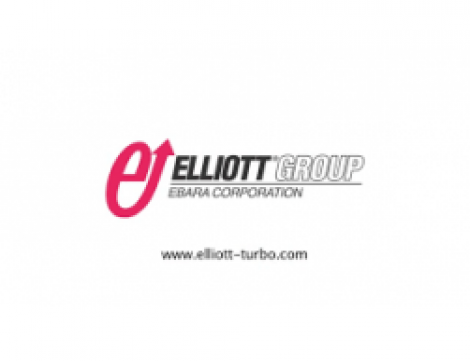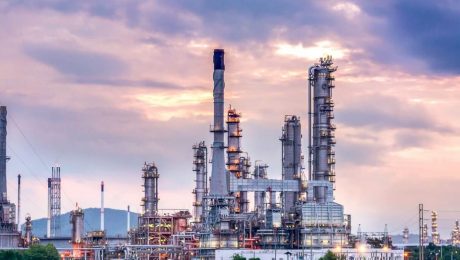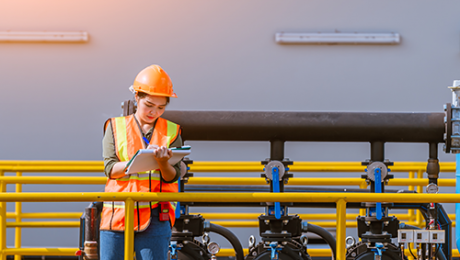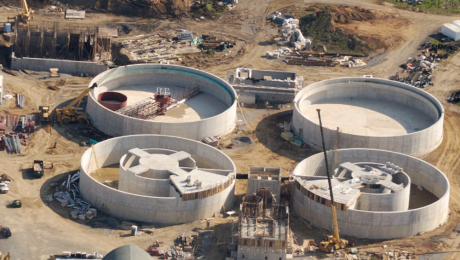- Home
- About Us
- Products
- EPC projects
- Technology
- Services
- Clients
- Media
- Blog
VIEW ALL -
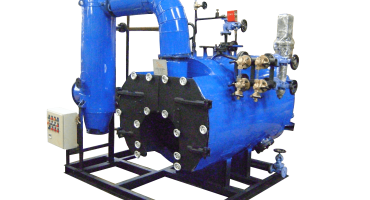 19 July 2023 by bullweb, in Boiler
19 July 2023 by bullweb, in BoilerA Guide to Boiler Maintenance in Chemical Processing Plant
Steam boiler systems are irreplaceable in the chemical process industries. Among...READ MORE +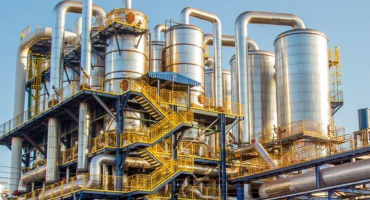 19 October 2022 by bullweb, in Steam Boiler,Steam Jackets
19 October 2022 by bullweb, in Steam Boiler,Steam JacketsSteam Jackets in Boilers | Definition, Types, and Applications
Steam is integral to meet various process operational requirements in manufactur...READ MORE +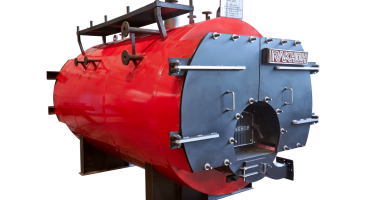 17 October 2022 by bullweb, in Boiler,Steam Boiler
17 October 2022 by bullweb, in Boiler,Steam BoilerSigns that indicate replacement for steam boilers
Steam boilers are vital equipment for steam generation in the process and manufa...READ MORE +
- Careers
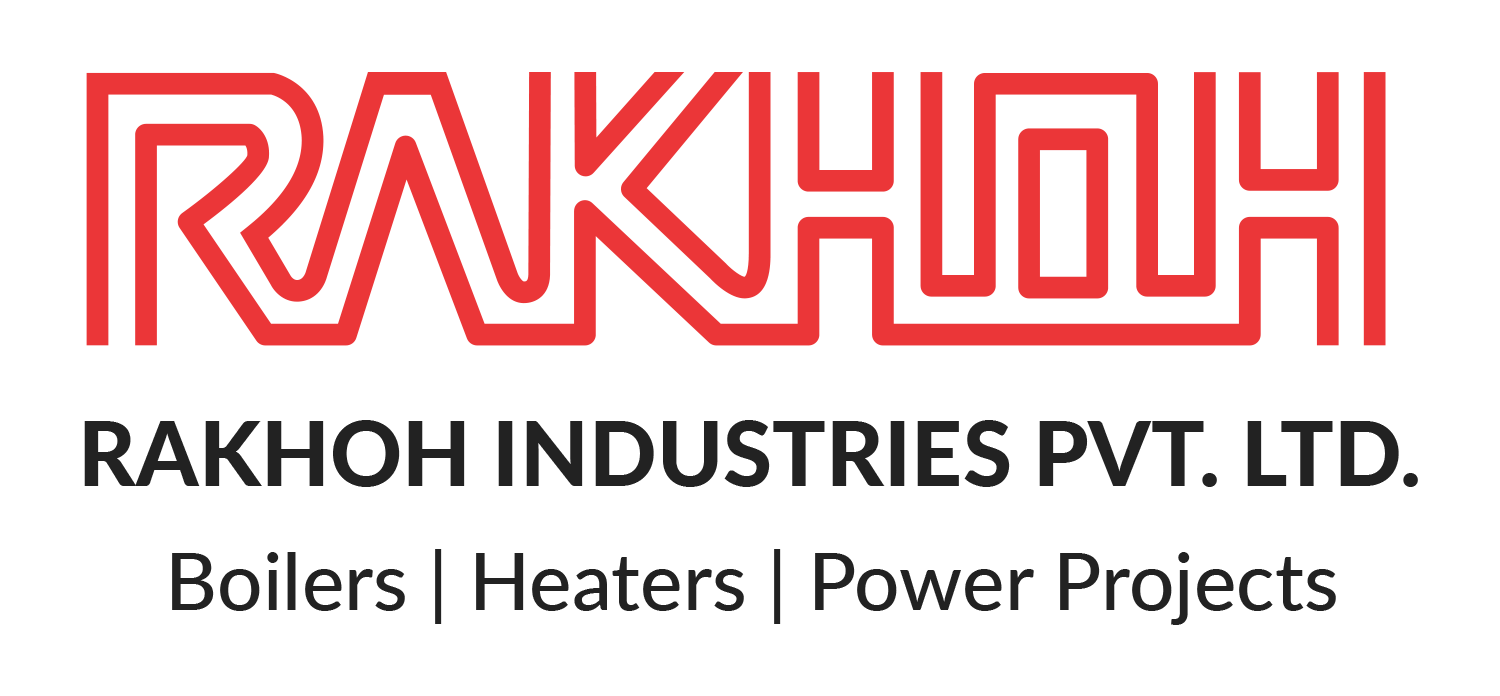
BOILER ACCESSORIES, THERMIC FLUID HEATERS & SPECIALTY FABRICATION.
+9120 - 66308333
Email: enquiry@rakhoh.com
RAKHOH BOILERS
S-11, T Block, M.I.D.C.,Bhosari, PUNE - 411 026. Maharashtra, India
BLOG & STORIES
Every process industry requires an efficient steam boiler to ensure seamless operations and maximum productivity in the plant. However, every steam boiler comes with a set of peculiarities. Two boilers designed by the boiler manufacturer at the same time have unique qualities and special tuning issues. Therefore, regular monitoring of every component of the steam boiler is imperative for hassle-free process operations. Controls in steam boilers can be explained with the various controls in steam boilers leading to optimal productivity from the fuels fed in the system. Let us learn about the controls of the steam boilers in detail,
Operator Control:
The operator’s station in the control system is known as a master or as a hand/auto station, control station, or operator station. The station is the operator interface for a specific control loop and usually, a switch located on the control panel in outdated plants or accessible from the operator’s station with the equipped, all-digital controls. Generally, the control station allows the operator to function interchangeably between manual and automatic modes of operation. All the control loops discussed combine to form the set of controls to manage the key steam boiler operating functions.
As a control loop is in manual mode, it allows the operator direct control of the output. In automatic mode, the output is modulated by the proportional-integral-derivative (PID) controller. The operator usually has control over the setpoint or operating point of the process, either directly or through using a signal. In some instances, such as in primary airflow control, the setpoint is shown on the controller located on the control panel or the computer screen graphic display. The cascade mode is a subset of the automatic mode, allowing the operator to turn over control of the setpoint to the master, with internal logic generating the set point.
Furnace Pressure Control:
Furnace pressure control is simple but also one that has important safety implications. Steam boilers use induced draft (ID) fans or inlet dampers to control boiler furnace pressure. The general control system consists of one controller that compares the difference between the furnace pressure and the furnace pressure setpoint using a signal usually based on forced draft (FD) fan master output. The output from the controller is usually fed through an ID fan master control station.
It is also essential that there should be high and low furnace pressure logic to stop the ID fan from increasing or decreasing speed, as required. On a negative furnace pressure signal, an override closes the ID inlet damper or decreases ID fan speed is required. The settings of these signals are decided by the boiler and fan supplier while designing the system. A well-tuned system can maintain furnace pressure to – 0.5 inches H2O.
One of the common mistakes performed by steam boilers tuners is using the quick integral action to the furnace pressure controller. Furnace pressure changes quickly, but not immediately. Therefore, it is crucial to consider the furnace size, the amount of ductwork between the furnace, and the fans as a condenser in the system as the air is compressible.
Airflow and Oxygen Trim:
Usually, the FD fan master only controls the airflow. However, some steam boilers are designed with secondary airflow dampers to control the airflow. Air and O2 control is crucial for the safe and efficient operation of the steam boiler. The airflow signal is measured in terms of a percentage and is usually not available in volumetric or mass flow units. With variations in coal heat content, air temperature, and combustion conditions inside a boiler, proper burning is ensured by measuring the amount of oxygen content in the flue gas, commonly referred to simply as O2.
Drum Level and Feedwater Control:
Drum level control uses a cascaded controller scheme involving an outer and an inner controller. Steam flow indicates the rate at which water is removed from the drum. Steam flow is used as a feedforward to the outer controller. The fault in the drum level is operated by the outer controller. The output of this controller is the feedwater flow set point with the output from the controller used to modulate the feedwater flow control valve.
Feedwater is fed into the drum via a series of valves in parallel with a series of constant-pressure feedwater pumps. If the feedwater level in the drum is excessive, the water becomes entrained in the steam passing the turbine, causing hazardous results. If the drum feedwater level is too low, the drum itself becomes overheated, resulting in damaging consequences.
Superheat Temperature Control:
Superheated steam temperature control is simple, with steam exiting the drum and passing through a primary superheater before it enters the desuperheater. Here, the attemperation water is mixed with the steam to adjust its temperature before it enters the next superheater section. Once the steam passes through that superheater, the outlet temperature is measured.
Deaerator Level Control:
Often, a three-element controller is used for deaerator level control. As the drum level controls use drum level, steam flow, and feedwater flow, the three-element controller for the deaerator uses deaerator level, feedwater flow, and condensate flow.
Conclusion:
For efficient and reliable steam boilers and thermal solutions for your process plant, contact Rakhoh Boilers, one of the leading boiler manufacturers in Pune with 38+ years of expertise. We have successfully installed 3000+ boilers in over 26 countries worldwide.
For more details on our products and services, visit www.rakhoh.com
Industrial steam boilers are imperative for seamless process operations in manufacturing facilities. Operating personnel take every effort to ensure that the boiler system is efficiently operating and immediate action is taken after detecting any issue. Although various components of the steam boiler help in preventing any damage, the sight glass or gauge glass is vital in detecting an issue in the first place. It is crucial to maintain a proper water level to ensure the proper functioning of the boiler system. But, it is not possible to peek inside the system while it is operating. Sight glass in steam boilers is an effective method for checking the water level of the system.
What is Sight Glass in Steam Boilers?
Sight glass in steam boilers, also referred to as gauge glass, is a small and simple component that plays a vital role in the operation of the steam boiler system. Sight glass offers an easy-to-understand visual readout of the water level in the steam boiler and effectively prevents hazardous overheating incidents that occur as the water levels fall too low and heating elements become exposed. Therefore, it is essential to take good care of the sight glass in the steam boiler so that the system can continue to operate safely and efficiently.
The objective of sight glass is to allow the plant personnel and engineers to examine the internals of the boiler systems without hindering the environment within. Often referred to as gauge glasses, it enables a way to see the levels of fluids or gasses passing through a critical point of the system design, monitor pressure changes, and overall anything else that the sight glass windows could allow to observe.
Design and Material of Sight Glass in Steam Boilers:
Sight glass in steam boilers is usually simple in design. Earlier, it consisted of a glass tube that is linked to an important part of the boiler system, like a tank or a gas inlet. However, modern industrial sight glasses are manufactured from a glass disk held securely by bolts and gaskets between two metal frames to maintain the standards of sanitary fittings. The glass used is usually soda-lime glass or borosilicate glass. Stainless steel is the ideal choice for metal because of its superior strength and abrasion resistance.
Sight glass must withstand every type of material and fluids that come into contact with it to avoid the tarnishing or degrading of the sight glass, restricting the ability to use it for system monitoring. While examining through a sight glass, the level of fluid observed against the glass indicates the level of fluid at that point in the steam boiler system. Bubbles against the glass are a sign of a liquid/vapor mix. If observed through a clear sight glass while the boiler system is operating, it indicates a full line of liquid or entirely lack thereof.
Sight glass is particularly important for equipment like steam boilers as it requires maintaining boiler water levels within a specific range to maintain operations and prevent boiler system failure. Fortunately, as the water pressure below and the steam above is equal, we can use a sight glass to observe any change in the steam boiler water level. A sight glass in a steam boiler usually includes two different index marks, i.e., a low-water threshold and a high-water threshold. Reaching a point much above the top mark leads to the risk of overfilling the boiler, which can prevent steam from rising into the boiler system. Reaching below the lower threshold without shutting the steam boiler down leads to the risk of damaging the equipment from the heat could also lead to a dangerous fire or explosion.
Maintenance of Sight Glass in Steam Boilers:
Maintaining a proper water level is a requirement for seamless operation of a steam boiler. If the water level is too low, the fire tubes in the system become exposed. Without water to cool it, the metal of the tubes can overheat, warp, and crack, leading to leaks and ruptures. If the water level is too high, the boiler cannot produce enough pure steam to generate heat, reducing performance and increasing fuel use as the boiler system compensates with more flame.
The sight glass offers the function of allowing the operators to monitor the condition of the water and its level. As the water in the sight glass is the same in the steam boiler, a cloudy sight glass is the sign of contaminants in the boiler that should be addressed. Foam in the sight glass is also an indicator of water contamination. But not only the water inside requires it to be kept clear. The outside of the sight glass should be regularly cleaned to ensure that the water level and level markings are visible.
Conclusion:
Since its formation in 1983, Rakhoh Boilers strives to enhance and improve the safety of the boiler operations by manufacturing and installing steam boilers of the highest quality to ensure the safety of the process plants and prevent any fatal accidents or injuries to the staff working and operating the plant.
Visit www.rakhoh.com to learn more
The combustion process is a crucial process for the operation of steam boilers. Similarly, burners are a vital component of the combustion process. Burners provide the heat needed for a steam boiler to convert water into steam. Generally, a burner must gain the highest combustion efficiency with the lowest possible excess air. Burner is considered an industrial blowtorch that enables the pushing of heat into the steam boiler system. It increases or decreases the heat injected based on steam demand.
Role of Burners in Steam Boilers:
The basic function of an industrial burner is a simple concept of mixing the fuel and air for creating combustion. Burners are ignited on various types of fuel however the most commonly used are natural gas, oil, propane, and coal. In the last years, facilities have reduced investment in the usage of coal to a more efficient and cleaner fuel like natural gas.
The burner must perform five functions, regardless of the type of fuel used:
Complete combustion takes place when all the combustible elements and compounds of the fuel are completely oxidized. However, complete combustion also leads to harmful byproducts of combustion, including NOx and CO.
The amount of NOx and CO generated varies greatly, as per the burner design as well as the fuel-fired. Burners with uncontrolled NOx produce approximately 60 ppm or more. Low NOx burners are the current standard and typically produce NOx of 30 ppm, whereas ultra-low NOx designs have been developed, but restricted to firing on natural gas or propane.
Components of Burner in Steam Boiler:
The burner maintains the amount of air supplied to the fire through some means. The medium can vary from a single blade damper to variable input blades at the fan inlet and may also include a VSD (variable speed drive) in the fan motor.
To provide optimal combustion, the dampers or VSD must control the airflow without sticking or falling, which produces variations in the airflow. The dampers also need to maintain the flow without causing distortions in the flow of air to the burner.
Types of Burners:
Gas Burners:
Gas burners involve the premix and post-mix techniques. Post-mix includes combining gas and oil after it enters the furnace, whereas premix burners are vice-versa.
Two types of post-mix gas burners are usually known as atmospheric burners or power burners. Atmospheric burners do not consist of fans or blowers to deliver the combustion air to the burner.
Pre-mix burners are lesser used burners as most operators that went from the burning process equipment to the boiler plant prefer the premix burners.
Oil Burners:
Fuel oil is added to the burner by using oil guns with a burner tip at the end. The arrangement of the tip and the gun varies with the type of atomization system. There are two types of oil burners that are,
Vaporizing burners: In vaporizing burners, the volatile fuel passes at low pressure through an adjacent tube to the flame for the vaporization to take place. The vapor stream issues out of an orifice at a high velocity and entrains primary air.
Atomizing burners: Atomizing burners consist of an arrangement for the atomization of liquid fuels before the combustion takes place. For atomization, a jet or a thin film of liquid is obtained and emerges into the open atmosphere at a suitable velocity.
Correlation between Air and Burner in Steam Boiler:
For efficient fuel burning, burners should have the optimal amount of air. It is the reason the air to fuel ratio is an indicator to ensure efficient burner function. When ratios of fuel and air are improper, unburned fuel is deposited as soot in boiler tubes. It directly affects the ability of the heat to pass from the tubes to the surrounding water, which leads to reducing the steam output.
While feeding outside air to a burner, the temperature of that air is taken into account. The fluctuations in the supply air temperature for the burner cause combustion issues.
Combustion tuning is a way to ensure it is not occurring in the steam boiler system. It is due to the temperature variance that affects burner combustion.
Byproducts of Burner:
Conclusion:
As one of the world’s leading combustion experts and boiler manufacturers, Rakhoh specializes in boiler burner development. We have more than 39 years of experience in designing and manufacturing steam boilers and burners. Rakhoh offers a range of superior boiler burners that are compatible with a variety of fuels and applications.
For more details on our products and services, visit www.rakhoh.com
Safety valves are an integral part of steam boilers to ensure the safety of the boiler system and operating personnel. Valves in steam boilers are safety equipment that controls pressure and temperature. Processing plants usually use steam at lower pressures because steam at a low pressure leads to higher latent heat, increasing energy efficiency. As the steam pressure and temperature are related, the temperature is controlled by controlling the steam pressure. Lower steam pressure will also provide improved plant safety. Steam for process heating offers multiple benefits over other heating methods such as simplicity, high efficiency, and reliability. By regulating steam pressure and flow, the safety valve helps in increasing productivity and process efficiencies.
Types of Safety Valves in Steam Boilers:
Though most safety valves control steam flow, special service conditions exist with steam regarding temperature and pressure. The steam valves used most commonly are listed below,
Ball Valves:
Ball valves come with tight shut-off and predictable control. It includes a high range of use due to the regulating element design without the hindrance of side loads usually found in butterfly or globe valves. The benefits of ball valves are easy operation, high flow, high pressure, and high-temperature capabilities. Low cleanliness and the inability to handle slurries are the drawbacks of ball valves.
Butterfly Valves:
Butterfly valves control steam flow with a disk that turns on a diametrical axis in a pipe, or through two semicircular plates hinged on a common spindle that allows flow in only one direction. Butterfly valves are used as throttling valves for controlling flow and offer a rotary stem movement of 90 degrees or less with a compact design. Unlike ball valves, butterfly valves do not include pockets in which fluids and gas may become trapped when the valve is closed.
Globe Valves:
As the name suggests, globe valves are linear motion valves with round-shaped bodies. It is primarily used in industry to regulate fluid flow in both on/off and throttling services. The benefits of globe valves are precise throttling and control, as well as high-pressure limits. However, poor cleanliness is its major disadvantage.
Gate/Knife Valves:
Gate valves or knife valves are linear motion valves that provide a shut-off through a flat closure element sliding into the flow stream. Gate valves are generally classified into two types: parallel gate valves and wedge-shaped gate valves. Parallel gate valve uses a flat disc gate between two parallel seats upstream and downstream. Knife valves are similar but with a sharp edge on the bottom of the gate. The drawbacks of gate valves include pressure limitations, lack of cleanliness, and low shut-off.
Diaphragm Valves:
The diaphragm valve uses a pinching method to prevent the valve flow through a flexible diaphragm. One of the best advantages of diaphragm valves is that the components of the valve can be isolated from the process fluid, making it ideal for sanitary applications. The maximum temperature limit of the diaphragm valve is 450°F.
Plug Valve:
Similar to ball valves, plug valves are quarter-turn valves that consist of a plug that can either be in the cylindrical shape or conical shape. The plug also includes a through a slit that remains in line with the flow in the open condition. As the plug rotates by 90°, the slit becomes perpendicular to flow and results in valves getting closed.
Disc Check Valves:
Disc check valves are also known as non-return valves as it allows the flow to pass through only in one direction and stop the flow in another direction. Due to such unique quality, check valves are used in some critical applications in steam systems.
The four primary types of check valves are as follows:
Lift check valve:
Lift check valve function on the principle of gravity. As the fluid moves in the forward direction, the disc is lifted from the seat against the gravitational force by the incoming fluid force. Consequently, the valve allows the fluid to pass in the direction. When the fluid enters the opposite direction, it supports the gravity force and the disc remains on the seat, keeping the valve closed.
Swing check valve:
In the swing check valve, the disc swings around a point to which it is hinged. As the fluid moves in the forward direction, the disc swings in an open position that allows the passing of the fluid. With the fluid flow coming in the opposite direction, the disc swings and rests on the seat to lose it.
Spring-loaded check valves:
In spring-loaded check valves, tight shut-off is provided through a spring. The disc on the seat is held by the spring. The fluid should exert some pressure in the forward flow condition, called cracking pressure to open the disc against the spring pressure.
Diaphragm type check valve:
Diaphragm type check valve uses diaphragms arranged in a way that opens and allows the flow only in the forward direction. As the flow comes from the reverse direction, the diaphragms remain closed.
About Rakhoh Boilers:
Rakhoh Boilers has been a trusted boiler manufacturer since 1983, delivering a range of efficient and reliable steam boilers, waste heat recovery systems, thermic fluid heaters, and boiler accessories. We provide excellent boiler services to ensure optimal efficiency and productivity of the steam boilers to your clientele, spread over 26 countries worldwide.
For more information on our products and services, visit www.rakhoh.com
